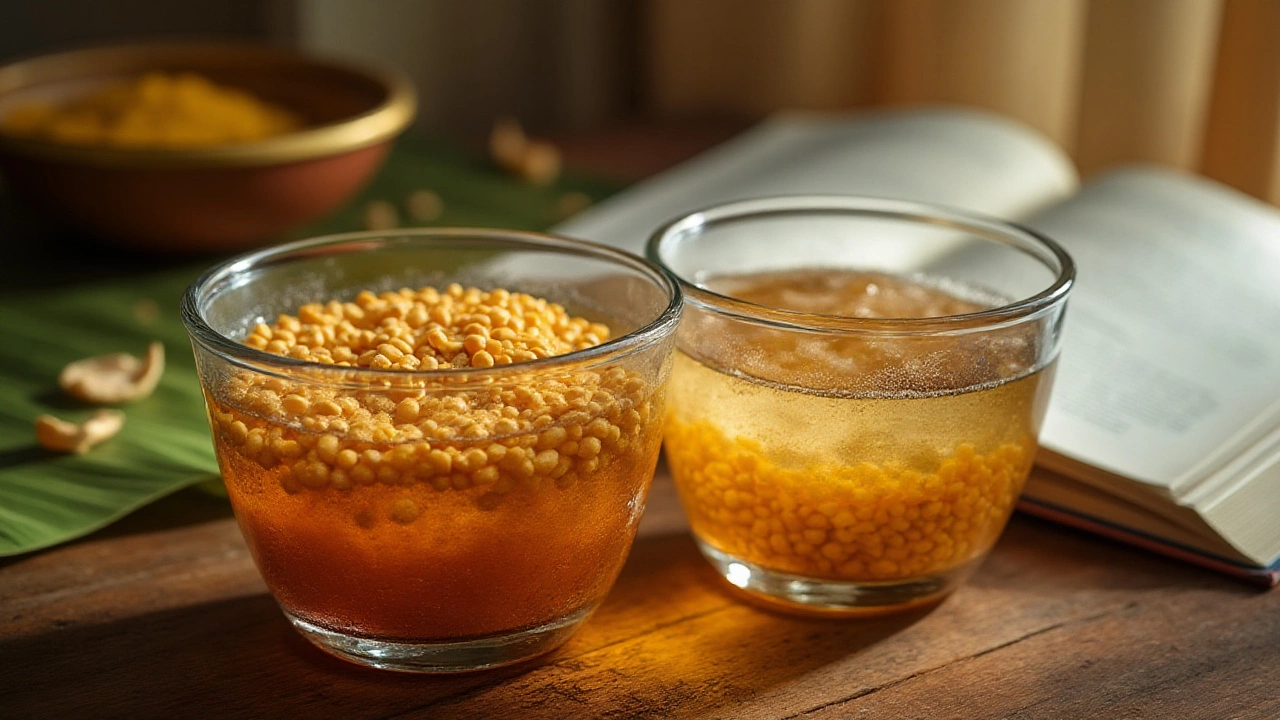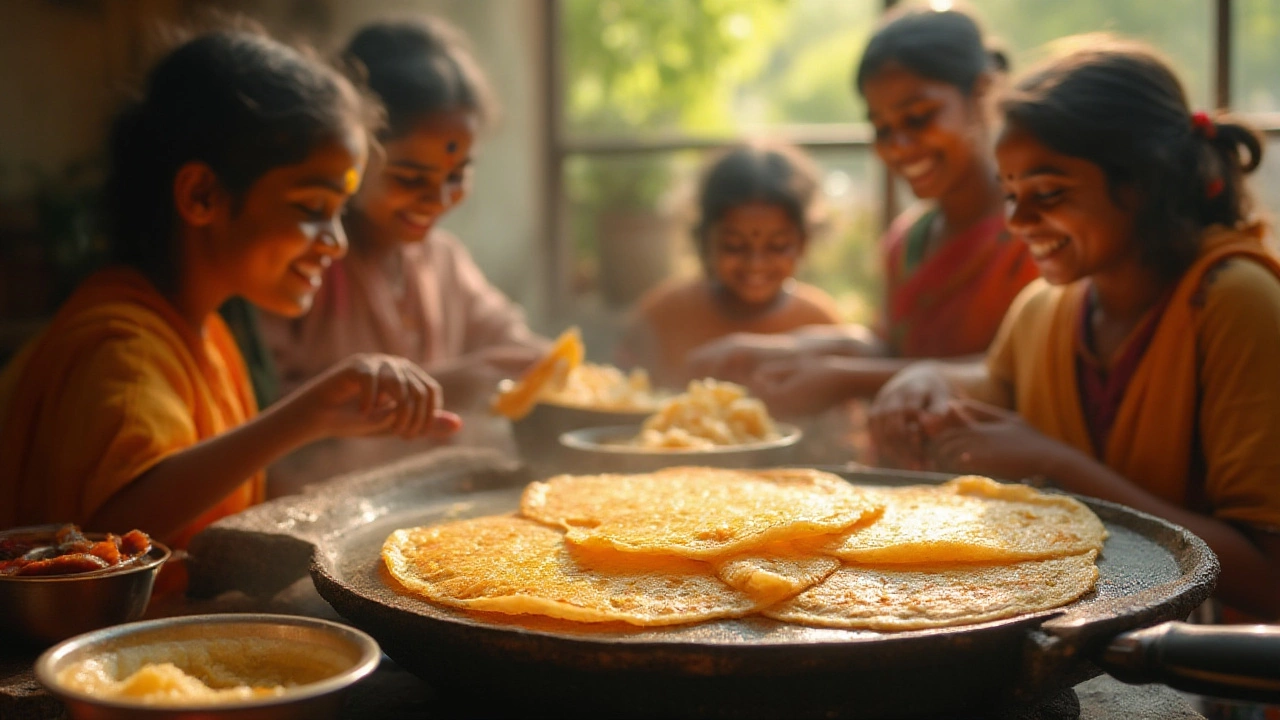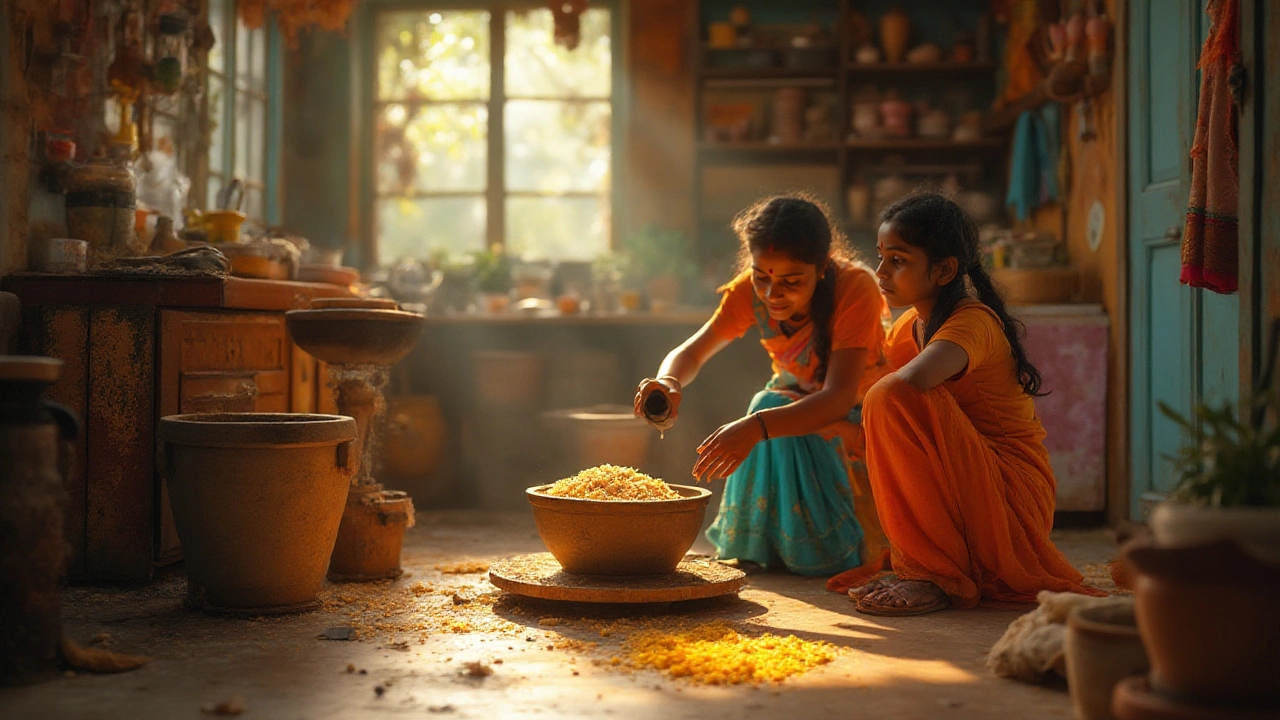Just imagine the moment: you’re craving a golden, crispy dosa, but there’s one big question swirling in your head – should you really soak urad dal overnight, or is it just another food myth we all grew up with? The way you prep urad dal can make or break your dosa. It’s not as simple as tossing some dal in water and calling it a night. This deep dive is all about the real answer, practical science, and those little tricks seasoned dosa-makers don’t always share.
Why Soaking Matters – And How Long Is Really Ideal?
Why does soaking urad dal even matter for dosa? Here’s the science: urad dal (that creamy-skinned split black gram, by the way) is packed full of hard-to-break-down proteins and starch. By soaking, you’re giving enzymes time to start breaking these down. It sounds fancy, but what it really means is you get a smoother batter, easier grinding, and *that* perfect lacy texture in your dosa. Recipes from as far back as the Chola dynasty mention soaking legumes overnight for better digestibility – it wasn’t guesswork, even then.
Now, what’s the magic number for soaking time? Most grandmas (and internet forums) will swear by soaking for 8 hours or overnight. A study by the Indian Institute of Food Processing Technology found that 6 to 8 hours is the sweet spot for water absorption and enzyme activation. Some folks push it as low as 4 hours in a pinch if you use warm water – but you may sacrifice some flavor.
Let’s talk texture. If you skip the overnight soak, your batter might stay gritty, leading to chewy dosas instead of paper-thin ones. Sometimes, even a powerful blender can’t make up for a rushed soak. Plus, unsaturated urad dal doesn’t ferment as well. Fermentation is the heart of that signature tang and softness in dosas, and it starts with properly hydrated lentils.
What about nutrients? Soaking actually boosts the bioavailability of minerals like iron and zinc—making dosas healthier. Enzyme activity in soaked dal reduces so-called "anti-nutrients" like phytic acid, which otherwise block your body from absorbing all the goodness. There’s even a bit of B vitamin boost going on during soaking and fermentation!
But what if you forget to soak? Here’s a hack shared by a well-known Chennai caterer: soak urad dal in very warm (not boiling) water with a pinch of fenugreek seeds for at least 3 hours. It’s not a miracle—overnight soaking is still the gold standard—but you’ll get a better batter than using dal straight from the bag.
If you’re after restaurant-style dosas, you’ll notice many pros soak urad dal separately from rice. Urad dal, with its high protein, needs longer to soften. Most dosa joints soak urad dal for 8 to 10 hours while rice goes for 4 to 6 hours, and they always keep them separate. It’s not just tradition; it gives you that irresistible springy-soft dosa texture plus a beautifully golden crust.
By the way, did you know that in southern India’s hottest months, folks often refrigerate their soaking dal? This avoids unwanted fermentation. If your kitchen is above 30°C (86°F), use cold water and refrigerate overnight.
So, soak urad dal overnight for the best results. The science, the taste, and generations of dosa-lovers agree. That said, life happens, and with a few tweaks, you can still save dinner. Ready for some pro tips?

How to Soak Urad Dal Right: Tricks, Timelines, and Kitchen Wisdom
Right timing is a lifesaver, but technique sets your dosa apart. Here’s the straight-up way to soak urad dal for dosa, step by step, just like it’s done in bustling South Indian kitchens – and a few tricks to rescue you when you’re short on time.
- Measure Carefully: For classic dosa, measure 1 part urad dal (whole or split, husked) to 3 parts dosa rice. Rinse the dal thoroughly — at least 3-4 times — until the water runs mostly clear. This reduces bitterness and helps with a smoother grind.
- Add Fenugreek Seeds: Add 1 tsp fenugreek (methi) seeds to your dal. Not only does this help fermentation (the seeds naturally carry wild yeasts), but it will also stabilize the batter, make it fluffier, and help get that signature dosa lace.
- Use Plenty of Water: Cover the dal with at least 2 inches of water. Dals tend to double in size while soaking, absorbing water deep into their starches and proteins.
- Go for a Cold Soak in Warm Weather: If you soak overnight in a hot kitchen, you’re at risk of premature fermentation — the batter can smell funky! If your kitchen hovers above 28°C, slip the bowl in the fridge.
- Timing: Soak for 8 hours or overnight. Longer is rarely better; beyond 12 hours the dal can start fermenting or smell off, which is even more likely in hot climates or if your water isn’t super fresh.
- If You Forgot: Short on time? Use warm (not hot) water and soak for at least 3 to 4 hours. A teaspoon of fenugreek seeds speeds things up. Still, expect a slightly less plush dosa texture.
- Draining Well: Once soaked, drain urad dal very well before grinding. Too much soaking water makes the batter watery and hard to ferment properly. Use the least possible water for grinding to achieve a thick, fluffy batter.
- Grinding: Use a wet grinder for the best texture and fluffiness (if you have one). Many dosa cooks swear by stone grinders over modern blenders—a bit old school, but it really gets you closer to the classic flavor and softness. In a blender, pulse in short bursts to keep batter cool.
- Fermentation: Combine the urad dal and rice batters, add salt, and let it ferment for 8–10 hours in a warm spot. In winter, keep the bowl in your oven with the light on, or wrap the bowl in a towel.
And yes, it’s totally okay to prepare extra soaked dal and freeze it, drained and patted dry. Just thaw it completely before grinding for emergencies.
Still having trouble? Here’s a quick troubleshooting guide:
- Dosa Batter Too Runny: Use less water for grinding next time. If it’s already too thin, try adding a tablespoon of rice flour to thicken.
- Dosa Not Crisping Up: Batter may need more fermentation or is too wet. Make sure your cast iron or nonstick pan is hot enough before spreading the batter.
- Sour or Off-Flavor: Batter was over-fermented or the dal wasn’t fresh. Make sure to taste the soaked dal before grinding next time.
The beauty of dosa is that it’s infinitely tweakable based on your kitchen, your climate, and your schedule. But soaking urad dal overnight is the closest thing this craft has to a universal rule. Here are some practical numbers comparing soaking methods people actually use:
| Soaking Method | Soaking Time | Batter Smoothness | Dosa Texture | Fermentation Quality |
|---|---|---|---|---|
| Overnight (8 hrs), room temp | 8 hours | Smoothest, fluffy batter | Crispy & soft | Excellent |
| Warm water, quick method | 3–4 hours | Mostly smooth, a bit gritty | Tastes good, slightly thicker | Good, but less tangy |
| No soak (direct blend) | None | Gritty, uneven | Chewy, not authentic | Poor |

Frequently Asked Questions and Dosa Secrets You Wish You Knew Sooner
Any dosa lover reading this has wondered: can you oversoak dal? Does the weather mess everything up? Can you soak and freeze? Here’s what expert dosa makers – and a few mischievous grandmas – say.
Is it safe to soak urad dal overnight? Yes, it’s not only safe, it’s traditional. Soaking breaks down stubborn enzymes. If your water is clean, and you don’t let the soaked dal sit out in crazy-hot weather for 24 hours, you’ve got nothing to worry about. Use cold water if the air is sweltering, or just pop it in the fridge.
Can I oversoak urad dal? Technically, yes. If left soaking way too long in hot weather or using old dal, you risk it fermenting in water, which makes for off-smelling, sticky batter. So stick to that sweet spot: around 8 hours at room temperature, or up to 12 hours in the fridge if you’re busy.
Is there a difference between whole and split urad dal? Yes. Whole urad dal (with black skin) takes longer to soak and yields a slightly earthier, heartier dosa. Most home cooks use skinned split urad dal for a milder taste and smoother grind, especially if you want that crisp restaurant-style finish. Both work — just adjust soak times as needed and rinse thoroughly.
Will soaking urad dal too little change the taste? Absolutely. Undersoaked dal won’t grind down well and gives you a coarse batter. The taste will lack depth, and the dosa will often be chewier. It might look right, but the texture and subtle tang, especially after fermentation, won’t be the same.
Should I use filtered water? If your tap water is hard, with a mineral aftertaste, go for filtered. Bad-tasting water leads to funky batter. Some chefs swear by adding a splash of coconut water for an extra fermentation kick — but start simple before you experiment.
How can I tell my dal is perfect to use? Plump, soft grains that break easily when pressed between fingers. No hard centers, no sliminess, and a fresh, clean smell are the signs you’re ready to grind. If it smells off, trust your gut and start again.
Can I use this method for other Indian dishes? Definitely. Well-soaked urad dal is also the secret behind fluffy idlis and pillow-soft vadas. The soaking process softens the lentils and aids fermentation in all these recipes.
Do I need to discard the soaking water? Most cooks drain and discard since it can carry dust or bitterness. But some eco-conscious dosa fans reuse it for watering plants or kneading roti dough. Your call!
Some of the best dosas are the result of “failed” experiments — batter that nearly soured, rice quantities mixed up, or a dash of leftover poha (flattened rice) tossed in for an even softer bite. That’s the thing about dosa-making. There’s tradition, and then there’s the joyful chaos of home kitchens. Just don’t skip the soak urad dal overnight step, and you’re already on your way to breakfast glory. Even world-class chefs can’t fake good dosa texture if the dal prep isn’t spot-on.
So next time you’re prepping for dosa Sunday, trust the process: measure, rinse, soak overnight, and then let your hands do the rest. With every step, you’re not just making food — you’re making memories as delicious as the dosas about to hit your tawa.
